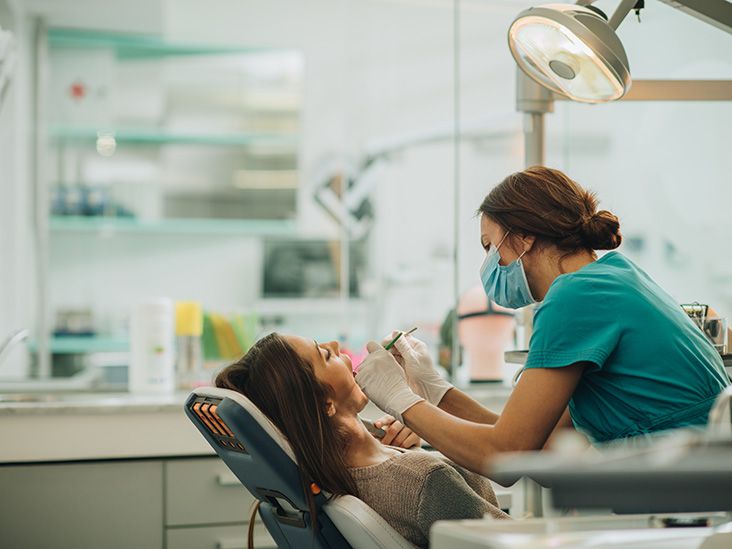Common Questions Concerning Oral Veneers Responded To
Dental veneers have come to be a progressively desired choice for those looking to enhance their smiles, yet lots of people continue to be uncertain regarding numerous aspects of their usage. As we discover these common questions, it ends up being crucial to consider not just the advantages but likewise the effects of opting for dental veneers in pursuit of a more confident look.
What Are Oral Veneers?
Dental veneers are thin, tailor-made coverings crafted from porcelain or composite material that are made to cover the front surface of teeth. These dental prosthetics offer both functional and aesthetic functions, giving a service for numerous dental imperfections, consisting of staining, chips, voids, and misalignment. By adhering to the teeth, veneers can considerably improve the total look of a smile, creating an extra uniform and eye-catching appearance.
Porcelain veneers are especially preferred for their natural clarity and stain resistance, making them a suitable selection for people looking for resilient outcomes. On the other hand, composite material veneers are usually cheaper and can be used in a single browse through, but they may not use the very same durability as porcelain choices.
The choice to go with oral veneers commonly originates from a need for aesthetic improvement, but people need to likewise think about elements such as the durability of the material, maintenance requirements, and the potential need for tooth reduction (Veneers). Eventually, dental veneers represent a reliable and versatile solution for attaining a radiant smile, catering to private aesthetic requirements while promoting confidence and self-esteem
How Are Veneers Applied?
The application procedure for veneers calls for mindful preparation and accuracy to make sure ideal results. The procedure usually begins with a comprehensive consultation, where the dental professional evaluates the patient's oral health and wellness, discusses wanted results, and identifies the appropriate kind of veneers, whether porcelain or composite material.
Once the therapy plan is developed, the dental expert prepares the teeth by eliminating a slim layer of enamel, generally regarding 0.5 mm to 1 mm, to fit the veneer. This step is critical as it makes sure a proper fit and prevents the veneers from showing up large - Veneers. After preparation, perceptions of the teeth are taken to develop personalized veneers that match the individual's special dental framework and aesthetic preferences
While the long-term veneers are being made in an oral laboratory, short-term veneers might be positioned to protect the prepared teeth. When the long-term veneers are all set, the dentist will thoroughly bond them to the teeth utilizing a solid oral adhesive.
What Are the Conveniences?

Furthermore, veneers are recognized for their toughness and resistance to staining compared to all-natural find more info teeth. Made from premium products such as porcelain or composite resin, they can keep their appearance for years with appropriate treatment. This long life makes them a practical investment in one's dental appearance.
In enhancement to visual improvements, veneers can also add to enhanced dental wellness. By covering harmed or damaged teeth, they can give additional assistance and defense, assisting to stop additional decay or wear and tear. This safety facet can decrease the need for a lot more comprehensive dental procedures in the future.

For How Long Do They Last?
With correct care and maintenance, oral veneers can last anywhere from 10 to 15 years, making them a long-lasting option for boosting one's smile. The longevity of veneers mostly relies on the product utilized, the quality of the first placement, and the patient's adherence to oral health techniques.
Porcelain veneers are known for their toughness and resistance to staining, usually lasting closer to the 15-year mark when looked after suitably. Composite veneers, while extra cost effective, may call for substitute sooner, frequently within 5 to ten years because of their sensitivity to put on and staining.

In addition, wearing a mouthguard during sporting activities or nighttime can provide extra security. Inevitably, while veneers offer a considerable visual improvement, their longevity is substantially affected by the dedication to proper dental care and routine appointments with a dental professional.
Are There Any Type Of Risks?
Considering the transformative impacts of oral veneers, it is necessary to acknowledge the prospective dangers related to their application. While veneers can boost the look of teeth, the treatment entails the elimination of a slim layer of enamel, which can raise tooth level of sensitivity and susceptability to degeneration.
One substantial threat is the opportunity of inappropriate positioning or suitable, resulting in discomfort, bite misalignment, or even damage to the underlying tooth structure. Additionally, if the veneers are not maintained properly, they can become discolored or broken with time, requiring substitute.
Patients may likewise experience allergic reactions to the products used in the veneers, especially if they have level of sensitivities to particular oral composites. While veneers are resilient, they are not indestructible; too much pressure from clenching or grinding can lead to cracks.
It is necessary for clients why not try here to talk to a certified dental professional to review their specific risks and to follow aftercare guidelines carefully. By Resources understanding these threats, clients can make educated choices concerning their oral veneer treatment and make certain the durability and success of their improvements.
Verdict
In summary, oral veneers stand for an important cosmetic solution for improving smiles, with considerations concerning their application, benefits, durability, and associated dangers. Their effectiveness is influenced by factors such as the option of material, with porcelain offering superior resilience compared to composite options. Proper treatment and maintenance are necessary to make best use of the life expectancy of veneers. Ultimately, informed decision-making pertaining to dental veneers can result in satisfactory aesthetic results and boosted oral health and wellness.
Oral veneers are thin, personalized coverings crafted from porcelain or composite resin that are created to cover the front surface of teeth. After prep work, impressions of the teeth are taken to create customized veneers that match the individual's distinct oral framework and visual preferences.
While the long-term veneers are being produced in a dental lab, momentary veneers might be positioned to shield the ready teeth. Once the long-term veneers are prepared, the dental expert will very carefully bond them to the teeth making use of a strong oral adhesive. Inevitably, notified decision-making relating to dental veneers can lead to adequate aesthetic end results and boosted dental health and wellness.